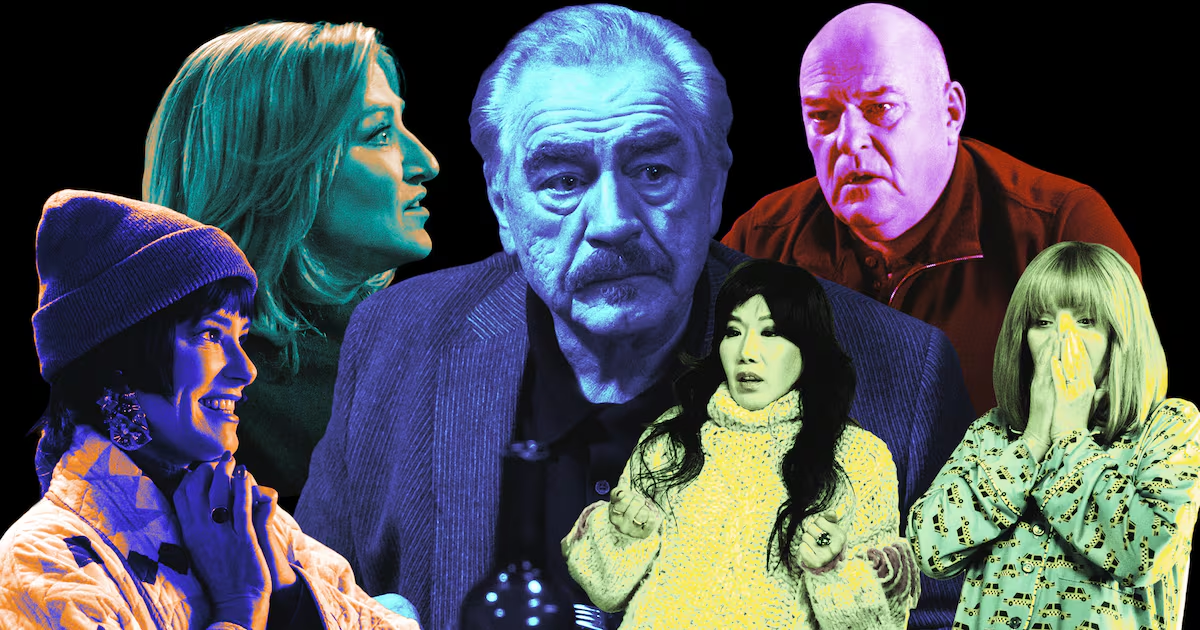Homages to horror cinema of the 1970s and 1980s are legion, be it high-profile efforts like James Wan’s The Conjuring and Luca Guadagnino’s Suspiria or indies such as The Void, The House of the Devil, and Almost Human. Yet even when they attempt to duplicate the grungy, scratchy lo-fi vibe of those eras’ domestic B-movies and foreign imports, they often teeter on the edge of—if not outright indulge in—pantomime that’s more affected than authentic. Not so, thankfully, with A Wounded Fawn, writer/director Travis Stevens’ follow-up to last year’s sturdy Jakob’s Wife, which is rough around the edges in all the best ways. Fierce, jagged and surreally sinister, it’s a spiritual companion piece to its illustrious grindhouse and giallo predecessors that gets not only their look but also their mood right, culminating in a prolonged finale of mind-bending insanity.
Premiering at the Tribeca Film Festival before debuting on Shudder later this year, A Wounded Fawn opens with a quote from Leonora Carrington (“I suddenly became aware that I was both mortal and touchable and that I could be destroyed”), whose book Surrealism, Alchemy and Art is later spied in a stack. The 20th century artist’s surrealist feminist soul courses through the veins of Stevens’ film, which commences with auction house bidding on a sculpture of The Wrath of the Erinyes, the three Furies from Greek mythology who punished men for their crimes. They’re goddesses of vengeance and retribution, and the statue in question is ultimately purchased by Kate (Malin Barr), who celebrates her triumph alone with a glass of bubbly in her tastefully furnished New York City apartment. Her one-woman party, however, is interrupted by rival bidder Bruce (Josh Ruben), who materializes on her doorstep late at night to make an offer she can’t refuse: His employer is willing to fork over double what Kate paid for The Wrath of the Erinyes, and he’ll throw in a hefty additional percentage for her trouble.
Kate’s agreement to this deal nets her far more than she bargained for, and afterward, A Wounded Fawn shifts its attention to Meredith (Sarah Lind), a single woman still recovering from a prior abusive relationship. To the delight of her friends, Meredith announces that she’s embarking on a weekend getaway to get laid with a new mystery man, and as Stevens quickly reveals, that figure is Bruce, who’s traded in his designer suit for a baseball cap and flannel jacket. Together, they’re going to spend a few days outside the city at Bruce’s remote cabin, and it’s apparent from their initial interactions that Meredith is smitten with her new beau, whose good-natured friendliness is tinged with a strange undercurrent of instability. Consequently, when a giant Doberman races past Meredith on the sidewalk as she’s strolling toward Bruce’s car, it resounds as a warning—albeit one that’s ignored by Meredith, who’s happily whisked away by Bruce to parts unknown.
By this early stage in A Wounded Fawn, Bruce’s malevolence has already been well-established, and it begins seeping out from behind his cheery façade during their drive, when he refuses to pull over at a roadside market so Meredith can use the bathroom and buy some candy. The flags fluttering in the wind at that stand are merely one of countless instances in which shades of red suggest impending demonic danger and violence, and Stevens marries such color-coding to an aesthetic of grainy, scratchy visuals wracked by compositional tension. While his images—and camera movements—are clearly going for a throwback vibe, there’s no self-conscious preciousness to them; on the contrary, their coarseness feels genuine and generates anxiety and friction, as when Stevens cuts from a master shot of Meredith staring out a window to a close-up of her doing the same, and the two sights don’t quite match—a deliberate gesture that suggests disorder and derangement lurking beneath ordinary surfaces.
Meredith immediately takes to Bruce’s art-deco cabin, whose walls and lighting are drenched in rouge hues. Her excitement turns to apprehension, though, when she spies The Wrath of the Erinyes on his coffee table and recognizes it as the same expensive piece that recently went through the museum where she works in order to determine its provenance—only to have Bruce lie, unconvincingly, that it’s just an impressive reproduction. More unnerving are the strange noises and occurrences that she soon experiences at this isolated residence, as well as the craziness of Bruce, whose good-guy act isn’t sustainable and swiftly gives way to mania. The look in Bruce’s eyes (first when Meredith isn’t paying attention, and then when she is) is one of barely controlled madness, and Ruben exhibits an impressive knack for segueing on a dime between sweet conviviality and a brand of volatile derangement that can only lead to one thing.
I’ve yet to mention the towering avian entity with whom Bruce converses (and obeys), since A Wounded Fawn is best experienced without knowledge of its more out-there flourishes. Suffice it to say, Stevens and co-writer Nathan Faudree introduce supernatural elements from the start and yet keep things oblique enough to maintain a sense of uneasy mystery. It’s no serious spoiler to divulge that The Wrath of the Erinyes factors heavily into the material’s final act, although the film impressively straddles the line between lucidity and irrationality, the latter taking hold during an extended showdown between Meredith and Bruce that’s awash in all manner of inexplicable and unholy spectacles. Jarring and unhinged, and led by a strong Lind performance that evolves from likable elation to formidable ferocity, Stevens’ phantasmagoric horror show embraces the incomprehensible, even as it preserves a tether to the Greco-Roman mythology at its core.
In doing so, the filmmaker transforms A Wounded Fawn into a memorable feminist treatise about the power of women to strike back at their tormentors, right up to a closing shot that stares so long at suffering that the fury of the Furies is almost palpable. It’s a waking nightmare of ancient deities and equally primeval misogyny, steeped in historical lore and classic-film style, and energized by an anger that’s at once as old as time and as alive as ever.






